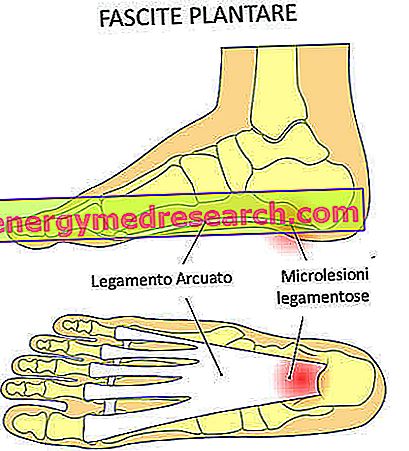
What is Naglazyme?
Naglazyme is a solution for infusion (drip into a vein). It contains the active substance galsulfase.
What is Naglazyme used for?
Naglazyme is used in the treatment of patients with mucopolysaccharidosis VI (MPS VI or Maroteaux-Lamy syndrome). This disease is caused by the lack of an enzyme called arylsulfatase B, necessary for the breakdown of substances in the body known as glycosaminoglycans (GAGs). If the enzyme is not present, GAGs cannot be broken down and accumulate in cells. Thus the signs of the disease emerge, the most obvious of which are short stature, large head and difficulty walking. The disease is usually diagnosed in children aged between one and five years.
Since the number of patients with MPS VI is low, the disease is considered "rare"; Naglazyme was designated an "orphan medicine" (a medicine used for rare diseases) on 14 February 2001.
How is Naglazyme used?
Treatment with Naglazyme should be supervised by a physician experienced in the management of patients with MPS VI or similar diseases. It must be administered in the presence of the availability of resuscitation equipment in the event of a medical emergency.
Naglazyme is given as a four-hour infusion once a week. Before each infusion, patients should take an antihistamine to reduce the risk of allergic reactions and may also receive a medicine to prevent fever. Although patients under the age of five were not included in the main Naglazyme study, it is important that they be treated as if they had a severe form of MPS VI.
How does Naglazyme work?
Naglazyme is an enzyme replacement therapy. Enzyme replacement therapy provides patients with the enzyme they lack. The active substance in Naglazyme, galsufase, is a copy of the human enzyme arylsulfatase B. Naglazyme helps break down GAGs and block their accumulation in cells. This can improve the symptoms of MPS VI, including the distance that people with this disease can walk. Galsulfase is produced by a method known as "recombinant DNA technology": it consists of a cell in which a gene (DNA) has been introduced that makes it able to produce the enzyme.
How has Naglazyme been studied?
Naglazyme was compared with a placebo (a dummy treatment) in one main study with 39 MPS VI patients aged between five and 29 years. The main measure of effectiveness was the distance patients could walk after 24 weeks of treatment.
What benefit has Naglazyme shown during the studies?
Naglazyme was more effective than placebo. After 24 weeks of treatment, the average distance
traveled in 12 minutes was increased by 109 meters in patients treated with Naglazyme, and by 18 meters in those treated with placebo.
What is the risk associated with Naglazyme?
In the studies, the most common side effects reported with Naglazyme (seen in more than 1 patient in 10) were: earache, dyspnoea (difficulty breathing), general pain and infusion reactions (such as fever, chills, rash and urticaria). For the full list of all side effects reported with Naglazyme, see the Package Leaflet.
Naglazyme should not be used in people who may be hypersensitive (allergic) to galsulfase or any of the other ingredients.
Why has Naglazyme been approved?
The Committee for Medicinal Products for Human Use (CHMP) has established that, compared to patients treated with placebo, treatment with Naglazyme in patients with MPS VI gives benefits such as, for example, improved mobility. Naglazyme only slightly improves the symptoms of MPS VI; since this is a serious disease and since there are no alternative treatments for most patients with this disease, the CHMP considered that Naglazyme's benefits are greater than its risks with respect to long-term enzyme replacement therapy in diagnosed patients confirmed by MPS VI. The committee recommended that Naglazyme be given marketing authorization. Naglazyme was authorized in "exceptional circumstances". This means that since the disease is rare, it has not been possible to obtain complete information on Naglazyme. The European Medicines Agency will review annually any new information that will become available on the medicine and, if necessary, this summary will be updated.
What information is still awaited on Naglazyme?
The company that makes Naglazyme is conducting studies to examine the long-term efficacy and safety of Naglazyme in pregnant and lactating women, and in children under the age of five, to see if they develop antibodies (proteins produced in the body in response to Naglazyme intake that could influence response to treatment) and check for side effects of the medicine. In addition, the manufacturing company is performing studies to determine the optimal dose to be given to patients regularly over the long term.
What measures are being taken to reduce the risk associated with Naglazyme?
The company that makes Naglazyme has adopted a plan to monitor the safety and long-term effectiveness of the medicine, collecting all the necessary data from patients treated with it.
More information on Naglazyme:
On 24 January 2006, the European Commission granted a marketing authorization valid throughout the EU for Naglazyme to BioMarin Europe Limited.
For a summary of the opinion of the Committee for Orphan Medicinal Products, click here.
For the full EPAR version of Naglazyme, click here.
Last update of this summary: 05-2009.



